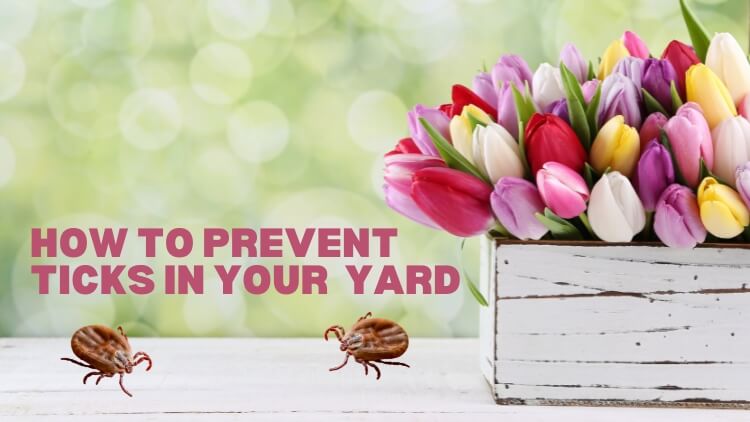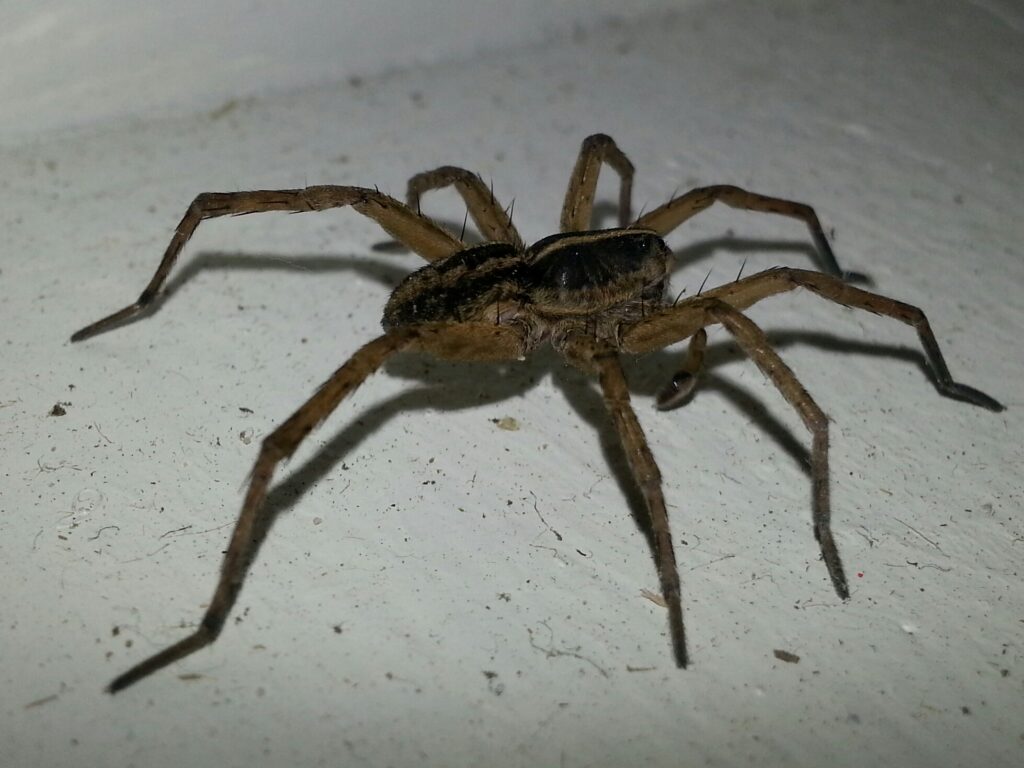 As the snow yields to blooming flowers and greener pastures, a less welcome spring visitor lurks around corners, seeking a free ride on your clothing and furry friends - ticks. As a professional in pest control in Toronto, we understand that these tiny creatures can be more than a mere annoyance. They pose significant health risks too, and homeowners must be prepared to combat this issue before it even starts.
This post will guide you through understanding these pests better: where they hide, how they look, and why they find humans attractive. More importantly, we will arm you with proactive measures to outsmart them, ensuring you enjoy your outdoor activities in peace. You will learn why enlisting an experienced pest control expert is beneficial and how our team contributes to the solution.
Knowledge is power. Being prepared and proactive is the best defence against these pesky invaders.
So, let's get started - arming ourselves against these tiny pests and ensuring our homes and yards remain tick-free this spring.
As the snow yields to blooming flowers and greener pastures, a less welcome spring visitor lurks around corners, seeking a free ride on your clothing and furry friends - ticks. As a professional in pest control in Toronto, we understand that these tiny creatures can be more than a mere annoyance. They pose significant health risks too, and homeowners must be prepared to combat this issue before it even starts.
This post will guide you through understanding these pests better: where they hide, how they look, and why they find humans attractive. More importantly, we will arm you with proactive measures to outsmart them, ensuring you enjoy your outdoor activities in peace. You will learn why enlisting an experienced pest control expert is beneficial and how our team contributes to the solution.
Knowledge is power. Being prepared and proactive is the best defence against these pesky invaders.
So, let's get started - arming ourselves against these tiny pests and ensuring our homes and yards remain tick-free this spring.
What are the Common Areas Where Ticks are Usually Found?
Understanding where they can thrive is the initial step in effective pest management. These bothersome pests are quite adaptable and can be found in various habitats. As your trusted advisors in pest protection, we emphasize the need for vigilant awareness of these common places:- Wooded areas - They mostly prefer dense forests where they can easily latch onto passing hosts from overhanging trees and shrubs. How to prevent ticks in your yard often starts with scrutinizing these areas.
- Tall grasses - Fields of high grass are often hot spots. They climb up the grass blades and wait for a potential host to brush against them.
- Leaf Piles - Unranked piles of leaves can provide a moist and safe haven for them to hide in.
- Stone Walls - The gaps and holes within stone walls present snug shelters for them, especially those close to woodlands or lawns.
- Pets' Habitats - They can easily attach to your pets in their outdoor houses, especially if these areas are not regularly cleaned.
What Do Ticks Typically Look Like?
Being able to identify the enemy, in this case, ticks, is your first line of defence. So, you may wonder 'What do ticks look like?' Interestingly, these tiny troublemakers have a distinct appearance, making it easier to identify them. Key features to look for include:- Size: They can vary greatly in size depending on whether they have eaten recently or not. Unfed ones are usually smaller than a sesame seed, while engorged ones can grow to the size of a pencil eraser or larger.
- Shape: They exhibit a flat body shape, which expands and becomes more rounded after they have had a meal (blood).
- Colour: Adults tend to be either brown or black in colour. Some species exhibit a reddish-brown hue.
- Legs: Regardless of their species, all have eight legs, unlike insects that commonly have six. This is one of the key factors that can help spot and differentiate them.
- Head: The head possesses a unique structure called the capitulum that houses mouthparts used to penetrate and cling to the host's skin.
Why are Ticks Attracted to Humans?
Understanding the attraction they hold for humans is integral in the proactive management of these stubborn pests. You're not the problem, it's just that they have certain preferences making us appealing targets. Here's why:- Body Heat: They are drawn to our body heat. When you are out gardening or simply enjoying the outdoors, the warmth of your body can be an irresistible beacon to ticks.
- Breath: Surprisingly, the carbon dioxide we exhale is rather enticing to them. This makes us an easy target, especially when we are engaged in physically strenuous activities that leave us panting.
- Scent: They are hardwired to detect the scent of humans and animals. Certain body odours can act as an alluring perfume to these nasty pests.
- Movement: Another core reason why they are attracted to humans is our movement. Being in motion can inadvertently stir them up from grassy or wooded areas, attracting them towards us. Therefore, knowledge of 'what do ticks look like' becomes crucial for early detection.
What are the Potential Dangers Associated with Ticks?
With the assurance of your safety, we address an important and often overlooked aspect linked to ticks - their potential to bring harm to humans. It's not just their irritating presence you should be concerned about, but also the severe health risks they pose. Let's delve into the details:- Lyme Disease: This is an infectious illness caused by the bacterium Borrelia burgdorferi, which these insects can carry. Signs may include fever, fatigue, a skin rash called erythema migrans, and headache. If unnoticed or untreated, the infection can affect joints, the heart, and your nervous system.
- Anaplasmosis: They can transmit this disease, causing symptoms such as fever, headache, muscle pain, and sometimes rash. If left untreated, Anaplasmosis can result in serious complications or even death.
- Babesiosis: A microscopic parasite that infects red blood cells, causing Babesiosis can be passed to humans by ticks. This disease can range in severity from asymptomatic to life-threatening, especially in people with weakened immune systems.
- Powassan Virus: Although rare, this tick-borne disease is serious and often leads to neurological conditions. Symptoms include fever, headache, vomiting, weakness, confusion, and seizures.
- Allergies: It's worth noting that those bitten by ticks may develop allergies to red meat, a condition known as Alpha-gal syndrome.
What Proactive Measures Can Homeowners Take to Prevent Ticks in Their Yard During Spring?
 As the thaw of winter makes way for the refreshing burst of spring, your yard becomes more than just a canvas of blossoms and greenery. It can also inadvertently be a welcoming habitat for ticks. Being proactive in your approach to prevention can save you and your loved ones from uncomfortable and potentially harmful encounters with these pests. Let’s walk through a few key steps you can undertake:
As the thaw of winter makes way for the refreshing burst of spring, your yard becomes more than just a canvas of blossoms and greenery. It can also inadvertently be a welcoming habitat for ticks. Being proactive in your approach to prevention can save you and your loved ones from uncomfortable and potentially harmful encounters with these pests. Let’s walk through a few key steps you can undertake:
- Maintain Your Yard: Keep your lawn cut short, bushes trimmed and leaves raked. These outdoor chores not only make your yard look neat but also less inviting to ticks who favour tall grasses and piled leaves as prime hiding spots.
- Create Tick-Free Zones: Use gravel or wood chips to form a barrier between your lawn and wooded areas. This can restrict them from migrating into your yard.
- Do Regular Tick Checks: After spending time outdoors, particularly in grassy or wooded areas, inspect your clothing, pets and body for these pests. The quicker you find and remove one, the less likely you are to get infected.
- Use Tick Repellents: Protect yourself and your pets by using repellents. For your yard, consider pesticide treatments, especially in areas where they are prevalent.
- Incorporate Tick-Resistant Plants: Certain plants naturally deter them. Incorporating these into your garden can act as a sustainable and natural form of pest control.
What are the Benefits of Hiring a Pest Control Expert for Tick Prevention?
Among the many strategies to outsmart these pests and ensure a pest-free springtime, enlisting the aid of a pest control expert is a smart choice. So, why should roping in an expert should be part of your tick-fighting strategy?- Expertise and Experience: Pest control experts have the knowledge and experience to handle infestations efficiently. They understand their lifecycle, their habitats, and the most effective pest control in Toronto.
- Customized Plans: A pest control expert will design a unique plan tailored to the specific conditions of your property. This customized treatment plan will effectively tackle the problem while considering the size of your home, the level of infestation, and long-term prevention.
- Cost-Effective: While hiring a professional might seem like an unnecessary expense at first, it can be a cost-effective measure in the long run. Experts can detect and treat infestations early before they escalate into a more serious, and hence, a more costly problem to resolve.
- Prevention of Further Damage: They can create massive damage. Utilizing pest control services can prevent infestation and protect your property from further damage. Plus, they can provide tips on how to prevent them in your yard.
- Safety: Pest control experts are equipped with the appropriate gear and treatment substances. They ensure that these treatments are administered in a way that is safe for the environment, pets, and people.

